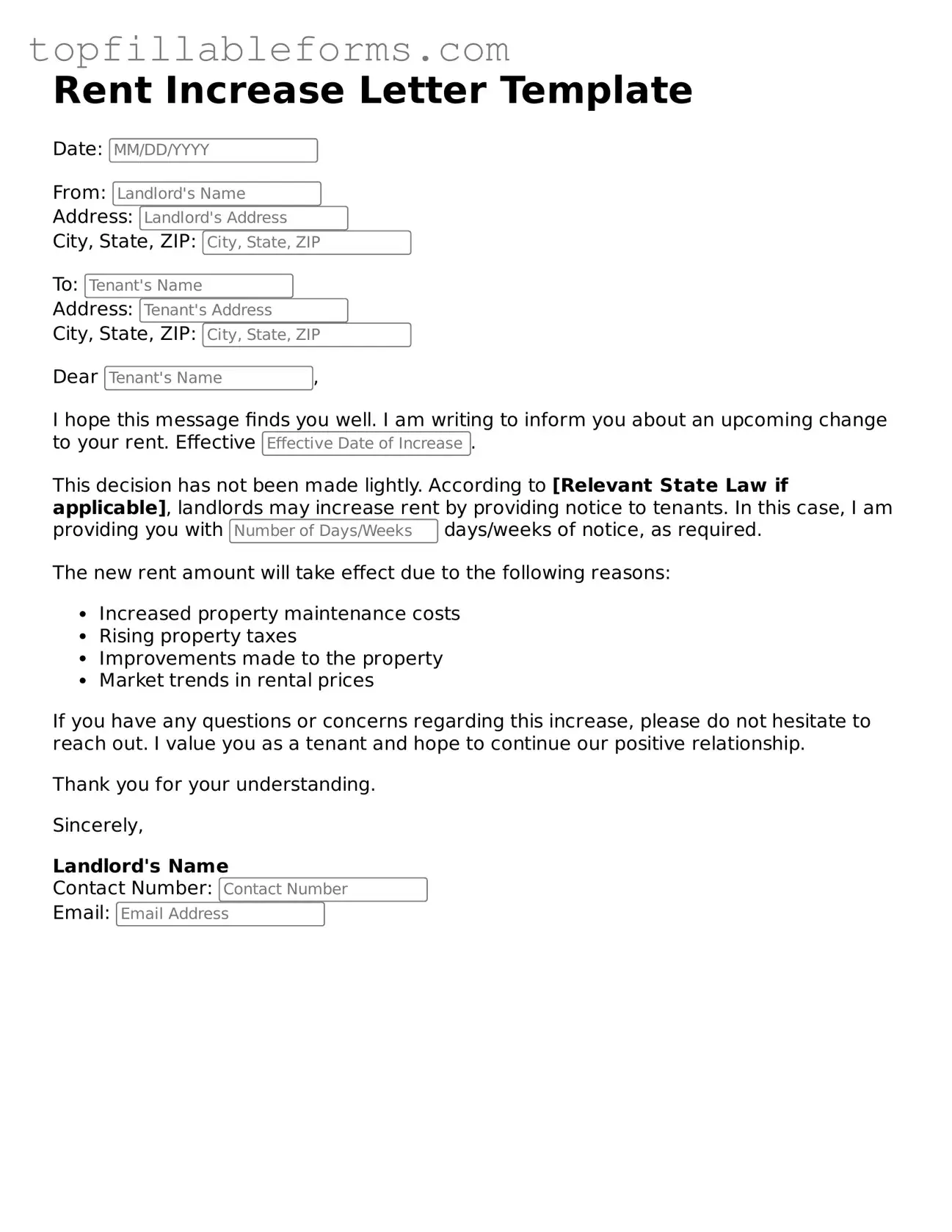Free Rent Increase Letter Form
A Rent Increase Letter form is a written notice provided by landlords to tenants, informing them of an upcoming increase in rent. This document outlines the new rental amount and the effective date of the increase, ensuring that tenants have clear communication regarding their housing costs. Understanding this form is essential for both landlords and tenants to navigate rental agreements effectively.
Open Rent Increase Letter Editor Here
